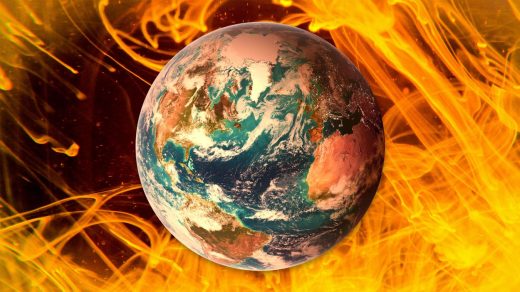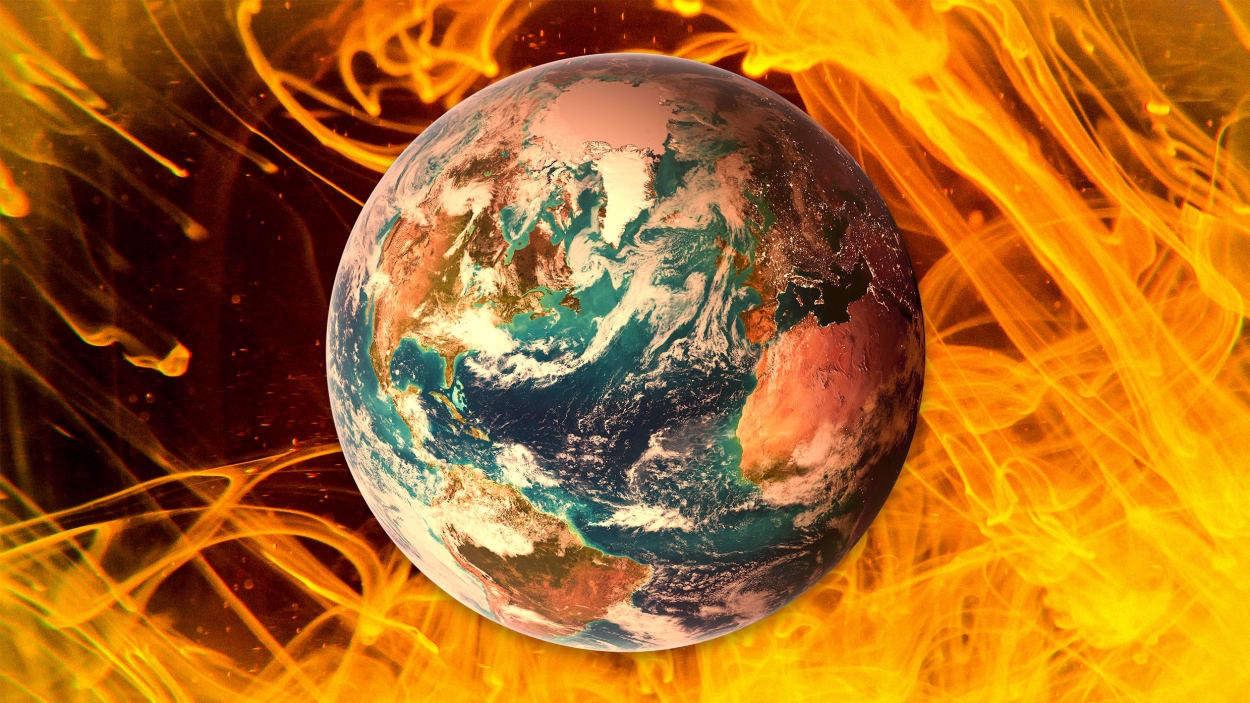Welcome to the 2080s, where a third of the planet might live in climate peril
Unless countries intensify their commitments to climate action, a new study argues that Earth is heading toward temperatures that could lock a staggering one-third of the planet’s population in extreme heat before the end of the century.
Average global temperatures have already climbed 1.2 degrees Celsius (2.2 degrees Fahrenheit) since the Industrial Revolution, pushing some 600 million people outside of the “human climate niche,” what scientists use to refer to zones we’ve inhabited for thousands of years because it’s where we can grow crops, raise livestock, not die of heatstroke or freeze to death, and generally thrive as a species.
In a study published Monday in Nature Sustainability, the coauthors—two leaders in climate change research, the University of Exeter’s Tim Lenton and Nanjing University’s Chi Xu—argue that unless countries reduce global warming to the levels agree upon as safe for humans (the Paris Accord’s limit of 1.5 degrees Celsius, or 2.7 degrees Fahrenheit) by 2100, five times more people will find themselves enduring unprecedented heat outside the human climate niche within the next half to three-quarters of a century.
Based on current policies worldwide, the planet is on pace to warm by 2.7 degrees Celsius (4.9 degrees Fahrenheit) by 2100.
But Lenton and Chi put this in starker, more personal terms: Right now, the lifetime emissions of just 1.2 U.S. citizens “expose one future person to unprecedented heat by end of century,” translating to a need “for more decisive policy action to limit the human costs and inequities of climate change.”
Their latest study tracks with ample previous research projecting that the human climate niche will gravitate to higher latitudes as mean annual temperatures climb, displacing the planet’s inhabitants in historic ways.
(Side note: Chi has developed other models mapping the human climate niche’s evolution as temperatures change; one particularly helpful video is on the U.S. government’s National Oceanic and Atmospheric Administration (NOAA) website, showing borderline-livable areas become unlivable, unlivable areas get even worse, and a few patches of once untenable cold areas like Siberia became more hospitable.)
What is the human climate niche and why does it matter?
This niche’s parameters are subjective, and for this paper Chi and Lenton developed their own by analyzing a wider set of climate conditions beyond simply heat—since too hot, too cold, too wet, and too dry are equally bad. They contend that we actually have two Goldilocks niches as humans: one for ideal mean annual temperature (which is 13 degrees Celsius, or 55.4 degrees Fahrenheit), the other for ideal precipitation (which occurs around 27 degrees Celsius, or 80.6 degrees Fahrenheit).
However, at 29 degrees Celsius (84.2 degrees Fahrenheit), heat can become dangerous to humans. The likelihood increases for crossing the fatal limit for dry-air temperature (said to be 40 degrees Celsius, or 104 degrees Fahrenheit) or for wet-bulb temperature (35 degrees Celsius, or 95 degrees Fahrenheit), which is a measurement that addresses humidity’s ability to prevent the body from cooling itself via sweat.
Chi and Lenton’s analysis is described as the first of its kind, weighing those four factors equally to better reflect how all inhabitants could be affected, not mostly the wealthier people in the West, which is what many past economic assessments of the climate crisis have done.
That flaw is not just ethically troublesome, the argument goes, but also perhaps a little foolish; none of their paper’s top 50 countries by predicted exposure are Western, and in fact they overlap closely with nations that have the lowest United Nations inequality-adjusted Human Development Index scores.
According to Chi and Lenton, the five headed for the most difficult futures are India, Nigeria, Indonesia, the Philippines, and Pakistan.
The study talks about how a third of humanity could be impacted as early as 2080, but the heat obviously wouldn’t wait to reveal itself on that date: The researchers add that for every 0.1 degree Celsius (0.18 degree Fahrenheit) rise in global average temperature, 140 million additional people could get exposed to too much heat. Already this April and May, heat waves around Asia have been destroying previous temperature records across the region. Earlier this week, mid-May temperatures for India’s second largest city, Delhi, cracked 46.2 degrees Celsius (115.2 degrees Fahrenheit).
(21)



